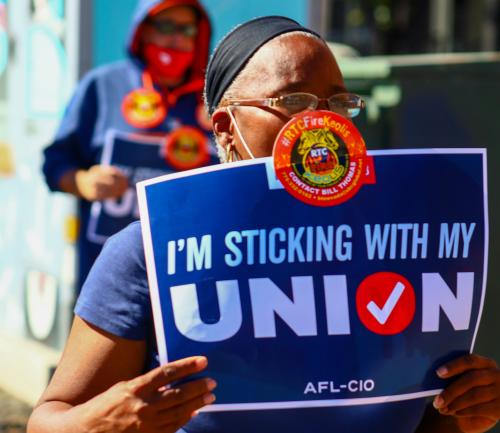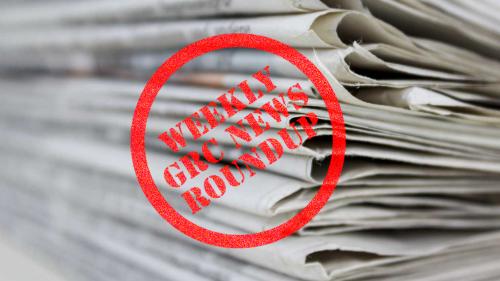Companies fretting over N&A pricing and voter turnout results can learn from Sun Microsystems' experience with the rule
When the SEC’s notice and access rule – the requirement to post proxy and other annual meeting materials online and send hard copies only upon request – went into effect (on a voluntary basis) last July, a frenzy of speculation followed on whether retail shareholders would continue to vote if they were no longer receiving hardcopy mailing forms. Amid confusion about the fulfillment process, cost savings and achieving quorum, only a handful of companies chose the ‘notice-only’ path. Now that some companies with year-end meetings after August have gone through the process, which according to Broadridge includes 10 percent of positions that were eligible through mid-November, those companies undecided about the costs and benefits should look to the companies that have conducted annual meetings under the model. Garnering some solid insight is vital, because as of January 2008 all large accelerated filers will have to comply, and by 2009, all other public companies will too.
At a December webcast co-hosted by Corporate Secretary magazine and Merrill Corporation entitled, Model disclosure: Which proxy model is best for your company?, Sun Microsystems, one of the first large companies to adopt the notice-only model, reflected on their experience with the process. Sun’s assistant general counsel Maria Pizzoli and the director of IR, Paul Ziots explained that, by and large, they were very pleased with the process and the results. Merrill’s vice president of strategy, Mike Schlanger joined in on the webcast.
One area that attracted attention was the impact of using a notice-only model on voting. Sun’s institutional investors were very comfortable with accessing materials and voting online. With a low percentage of retail holders (in comparison to other large listed companies), Sun felt turnout among retail holders was fine. Broadridge estimates the retail vote will decrease 75 percent with the notice-only delivery method, but Chuck Callan, senior vice president of regulatory affairs, reminds companies that the rule allows for a second mailing (with the ballot) ten days after the first. For Sun, a single mailing was sufficient to reach quorum at similar levels to prior years.
As companies select delivery models, some suggest notice only might be less appealing to companies with non-routine items on the annual meeting agenda. Pizzoli explained that this was not the case at Sun: ‘We had a reverse stock split proposal, a new omnibus stock incentive plan and two shareholder proposals – say on pay and simple majority vote for director elections.’
Interestingly, Sun did not receive one complaint from its institutional shareholders about the notice-only model, but did get some feedback from retail investors. Ziots said some individuals were confused about the process for ‘voting by telephone or getting materials,’ unaware they could request hard copies to vote. Some investors circled the vote directly on the notice, which does not constitute a legal vote. In spite of these quandaries, ‘there weren’t more than a dozen or two of those types of incidents,’ he noted, and ‘one person was able to handle the slightly increased question load within a week to two weeks after the notices went out.’
Schlanger explains that, overall, concerns about loss of retail votes appears to be a non-issue. Looking at companies that chose the notice-only path, there appears to have been little problem in achieving quorum. The total number of accounts voting (as opposed to total outstanding shares) are broadly flat or only down very slightly.
One size does not fit all
As companies debate what level of hardcopy to distribute, they must consider their unique needs to reduce costs and increase efficiency while avoiding reduced voter turnout. One important deadline to keep in mind is the requirement to have the ‘notice’ delivered and all proxy related materials available online, 40 days prior to the annual meeting.
Schlanger counsels that companies should not underestimate the time and effort needed to ‘file your proxy materials; post your documents in a print-ready and online-reviewable format on a cookie-free website; instruct your transfer agent and intermediary to prepare your shareholder data for the creation of the notice; print and prepare the notice for mailing; and have all your printed materials completed and delivered to your solicitors.’ Pizzoli added several days to the process to ensure all was complete. It is important to have everything ready so that when investors request hard copies they can be delivered within the three-day fulfillment deadline
Companies may opt to continue sending out hardcopy 10Ks to all investors as they always have. This option is referred to as full-set delivery. Even with full-set delivery the company is required to post the information online and provide notice as to where to find it. There is no requirement to send a separate notice to the shareholder – it can be included within the proxy statement. It is estimated that a majority of companies will opt for full-set delivery during 2008 and review the process next year.
Many companies will adopt a combination of hardcopy and notice-only delivery, referred to as the stratified model, which involves sending hard copies to selected shareholders and the ‘notice’ to others. ‘In conversations with prospective users … and with those that have already conducted notice only in the voluntary period, we’ve heard that they’ve selected this model, with the idea that it might hit their large shareholders,’ said Schlanger.
Complications can arise if there’s a supplement sent out to a select group, Schlanger notes, ‘you would probably have to post that material on the website to make sure the entire investor group have access to all information.’ He also mentioned that if you go full set, you have to honor the demands of those shareholders who have previously elected to only receive electronic delivery.
In charge of Merrill’s e-proxy network, Schlanger recounted how, in a series of one-on-one interviews Merrill found that ‘36 percent of our customers are saying they’re going full set [in 2008]. Notice only today is only in at 4 percent, and the stratified model is around 5 percent.’ The other 55 percent, are undecided. He attributes this ‘wait and see’ mentality to a desire to better understand the impacts: ‘People will be keeping a close eye on what happens at the early adopters.’ Another reason for the high level of indecision are rumors that the rules may change during 2009 and companies do not want to go to the trouble of implementing a new process only to have to make changes in a year or so.
Let them know
Faced with the challenges posed by e-proxy, companies can miss the seemingly innocuous steps, like making sure different parts of the website correlate with others and the FAQs page is up-to-date and conforms to requirements. Probably the most important thing to do once a company goes notice only – and one of the main reasons for the success at Sun, according to Pizzoli – is to transparently communicate with shareholders and ensure they understand what is going on. Sun issued a detailed press release, a requirement for all Nasdaq-listed companies adopting changes to proxy-delivery methods.
Sun also revised its IR website and included a Q&A on the proxy statement about the impact for registered and beneficial shareholders.
Pike Electric, also taking the notice-only path, included a notification and explanation of the process in its ‘CEO’s letter to shareholders.’ The company also has links on the IR website to Broadridge where investors can get information on the process and even vote online.
Formatting data on websites and using links and attachments in email communication is an area that needs to be considered. There are pros and cons to both HTML and PDF that need to be taken into account.
While many companies have been posting annual reports and other investor information on their websites for years, the hosting of a site facilitating online voting is new and challenging. Some companies may choose to host the site themselves but, given the complexity, Pizzoli explained Sun ‘didn’t want to experiment too much with web-hosting, so we did use Broadridge’s portal for web-hosting for beneficial holders,’ and standard HTML.
How much to print
With all the extra work involved and the concerns about voter turnout why are companies even considering the notice-only model? The answer is simple – money. Reducing printing means significant savings.
As a result of notice and access, the SEC predicted that 20 percent of shareholders would request hardcopy mailings, thus resulting in a cost-saving boon. The challenge for companies is determining how much paper to produce. If you guess too high then potential savings are reduced, too low and you could end up paying more. After conducting an informal review of its shareholder base Sun elected to print enough hard copies for 9 percent of its shareholder accounts. In the end only 1 percent of accounts actually requested printed materials.
Overestimating is safer. Printing less than necessary results in the need to print at short notice and ‘print on demand’ services are expensive. Underestimating also presents significant fulfillment challenges because companies only have a short time period (three days after the date of request) to furnish investors with hard copies.
Schlanger offered some sage advice for determining print levels: ‘If you think requests for print will come in at 3 to 4 percent that is great, but the story doesn’t end there. Think about all the other things you use the materials for – sending to customers, analyst meetings, roadshows. The fact is you’ve got this shareholder request issue … [and] you have a full year you have to supply paper in the event that someone wants it. So you are going to be printing.’ The good news: As more companies go down the notice and access path it should be a lot easier to predict printing requirements. Schlanger is hopeful that ‘Broadridge, the transfer agents and others involved in the process will quickly develop a pretty good feel for what the experience is.’
See-sawing costs
The cost picture involves more than potential printing and mailing savings. ‘We did find that [Sun’s] printing and mailing costs went down as a result of having to deliver so many fewer materials,’ said Pizzoli. But there are other expenses. ‘Our vendor fees went up; we paid more to Broadridge this year, and we also paid more to our transfer agent.’ For Broadridge’s part, Callan says, ‘We have not heard issuers express the opinion that fees are an impediment to notice and access.’
Ziots said that although ‘overall costs were dramatically reduced, because of printing and mailing,’ he would like to see ‘regulation of Broadridge fees, because they were able to impose a notice and access surcharge as opposed to a replacement fee for the traditional method,’ which resulted in Sun having to pay ‘the traditional method fee and an N&A surcharge.’ Lyell Dampeer, president, US investor communication solutions at Broadridge, disagrees with the term ‘surcharge’, explaining that ‘Notice and access has a series of incremental requirements that are placed on the bank and broker,’ and adds, ‘The fees that are charged to an issuer are actually the fees that are charged by the bank or broker where Broadridge acts as the billing agent.’ Callan further elaborates on the cost structure, mentioning the NYSE Proxy Working Group decided to let the market decide the notice and access fee, and that ‘Rule 456, even though it specifies the reimbursement of the broker by the issuer for the traditional proxy services, it does not specify a reimbursement for the notice and access services.’
Schlanger said the SEC intended to reduce costs, even though costs depend on individual company circumstances. ‘When you have a large shareholder base, that will incur greater fees because of the additional work the intermediaries and transfer agents will have to be engaged in … When you look at the fees you cut in printing and mailing, factor in new costs – the notice only fee, website hosting – you can see all your savings diminish.’
Ziots commented that even with these clarifications, ‘it’s very difficult to understand what they’re charging and what they’re charging for.’ Broadridge is making efforts in this respect, and has a section on their website where companies can log-in free of charge to get detailed pricing scenarios. The firm will also be providing monthly updated data for companies that seek it.
If it’s good enough for you
‘Despite the concern we have about any particular fees from any particular vendor, this process for us worked very well and we saved a significant amount of money,’ concluded Ziots. These savings totaled an impressive half a million dollars. To further limit handling and binding costs for companies embarking on e-proxy, Schlanger advised ‘combining your annual meeting booklet with your proxy statement into one document, which the SEC allows.’ Pizzoli said that Sun combined materials into one book, which ‘helped to reduce our storage fees with Broadridge after the annual meeting.’
There are hidden benefits too: The notice-only model can diminish costs incurred by shareholder activism. ‘Not only can companies engage completely on the internet, but they’re in a position where they don’t have to send the notice to everyone,’ said Schlanger. The SEC says you can be very selective on who you send that notice to. Of course, some companies have other stipulations. ‘There are a lot of proxy solicitors who are saying that if you’re engaged in a battle you need to make sure that all your shareholders are engaged as fully as possible, and printing and delivering might be the best way to do that. Or you do a targeted mailing to make sure you’re hitting the most important shareholders.’
Despite the savings, shareholder voting remains the most important issue and all the cost cutting will mean very little if a company is unable to achieve quorum. It will likely become more challenging if the NYSE proposal on changes to the broker-voting system and designating director elections as a non-routine item and adopted. ‘In the studies that were done leading up to the NYSE recommendation there was an estimate that upwards of 20 percent of the companies that had non-routine elections might not have achieved quorum in the absence of the broker vote,’ said Schlanger.
The decision on which proxy delivery model to adopt largely comes down to the view of the annual report and meeting, explained Schlanger. For companies that view the report and meeting simply as a compliance event, the notice-only model is more appealing. They want to do the process quickly and cheaply while meeting the minimum legal requirements. Companies that see the report and meeting as an outreach program and communication event, will likely continue printing some hard copies.
But the problem is more complicated. Deciding if, or how many, hard copies to produce also includes reputation and environmental responsibilities. Sun felt it was important as a technology company to be seen to be embracing new technologies. A Pizzoli explained, in printing less paper the company also advanced its social and environmental responsibilities.
Judging by Sun’s experience, the outlook for notice and access is positive, but experts warn that consideration of a company’s specific circumstances is important. ‘At the end of the day, you should save money, but it really is dependent on the overall shareholder base that you have,’ advised Schlanger. In the meantime, companies sharing their successes and failures will enable others to prepare for the inevitable induction of a new e-proxy era.








